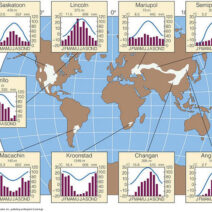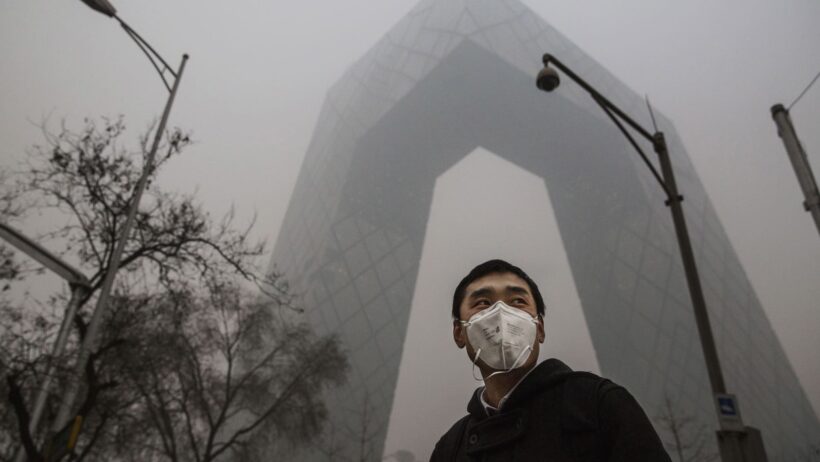As the specter of climate change looms ever closer, the Paris Climate Agreement stands as a pivotal framework for global cooperative efforts to combat this existential crisis. The agreement was forged in 2015, during the 21st Conference of the Parties to the United Nations Framework Convention on Climate Change (UNFCCC), and has since been a topic of intense debate among scholars, policymakers, and the public alike. A particularly provocative question arises: Is the Paris Climate Agreement legally binding or merely symbolic? To delve into this multifaceted issue, one must first explore the very nature of international law and the frameworks of climate agreements.
Transitioning from the abstract to the concrete, it is essential to acknowledge the architectural framework of the Paris Agreement. At its core, the agreement seeks to limit global warming to well below 2 degrees Celsius, aiming for a more ambitious target of 1.5 degrees. This goal necessitates collective efforts from nations across the globe to reduce greenhouse gas emissions substantially. Unlike its predecessor, the Kyoto Protocol, which imposed binding targets on developed nations, the Paris Agreement adopts a more inclusive and flexible approach. All participating countries are expected to set their own “Nationally Determined Contributions” (NDCs) towards achieving the set targets. This raises an interesting conundrum: If nations have the autonomy to determine their own contributions, can one genuinely label the agreement as legally binding?
The term “legally binding” carries significant weight in international law. Traditionally, legally binding agreements are those that impose obligations on parties in a manner enforceable through international or domestic legal proceedings. However, the Paris Agreement employs a different methodology. While it obligates nations to formulate and submit NDCs, it does not enforce compliance through punitive measures. Indeed, nations are encouraged to enhance their commitments over time, fostering a culture of ambition and accountability, yet lacking any formal mechanisms for sanctioning non-compliance. Is this ambiguity a strength or a weakness? Only time will tell.
Critics of the Paris Agreement often argue that its lack of enforceability renders it largely symbolic. From this perspective, the agreement’s provisions may be viewed as aspirational rhetoric rather than actionable commitments. There is merit to this criticism, especially when one considers the stark reality that some nations may contribute less than they initially pledged. This inconsistency presents a challenge for the efficacy of the agreement as a whole. Can a document that allows for such variability in national commitments truly be effective in curbing climate change? One might argue that it serves as a mere façade for progress, a token gesture in the face of a pressing crisis.
Yet, to dismiss the Paris Agreement as solely symbolic would be an oversimplification. The very act of convening nations and cultivating dialogue around this critical issue fosters collective consciousness about climate change. The agreement operates within an intricate tapestry of international diplomacy that has instigated real change on the ground. Numerous countries have reported significant advancements in renewable energy initiatives and emissions reductions catalyzed by the Paris framework. Indeed, the mere existence of this agreement has galvanized global activism and mobilized civil society in unprecedented ways.
Moreover, the global response to climate change extends far beyond just the Paris Agreement. Subnational actors, including states, cities, and private enterprises, have ramped up their efforts to curb emissions independently of their national governments. This phenomenon speaks volumes about the shifting dynamics of climate governance. The emergence of an eclectic array of climate coalitions and partnerships—from the Under2 Coalition to the We Are Still In movement—demonstrates that action can occur at multiple levels, often fueled by the collective aspiration inspired by frameworks like the Paris Agreement.
In addition to these grassroots movements, technological innovation plays a crucial role in the fight against climate change. The impetus generated by the Paris Agreement has spurred investment in clean technologies, accelerating advancements in renewable energy, electric mobility, and carbon capture techniques. These innovations are imperative ingredients in the larger recipe for success, showcasing that action and ambition can lead to tangible, measurable progress.
Nevertheless, the specter of climate inaction remains omnipresent. The paradox of the Paris Agreement lies in its dependence on both national and international goodwill. A concerted effort for compliance cannot stem from aspirational goals alone. The absence of legal ramifications for non-compliance introduces a critical volatility that could undermine the agreement’s overall efficacy. How then can nations be compelled to adhere to their commitments without the threat of legal repercussion? This question presents a formidable challenge for the future of climate governance.
In conclusion, the Paris Climate Agreement occupies a nuanced position in the landscape of international law and environmental governance. While it lacks the traditional mechanisms of a legally binding framework, its significance cannot be understated. The agreement serves as a powerful symbol of global consensus on climate action and has catalyzed movements and initiatives that transcend national borders. Ultimately, whether the Paris Agreement is deemed merely symbolic or legally binding may not be the most critical consideration. Instead, the focus should be on the collective, concerted efforts required to forge a more sustainable future—one that demands accountability, innovation, and unwavering commitment from all sectors of society.








